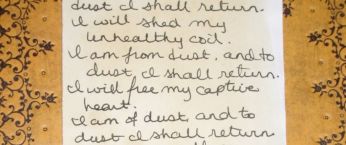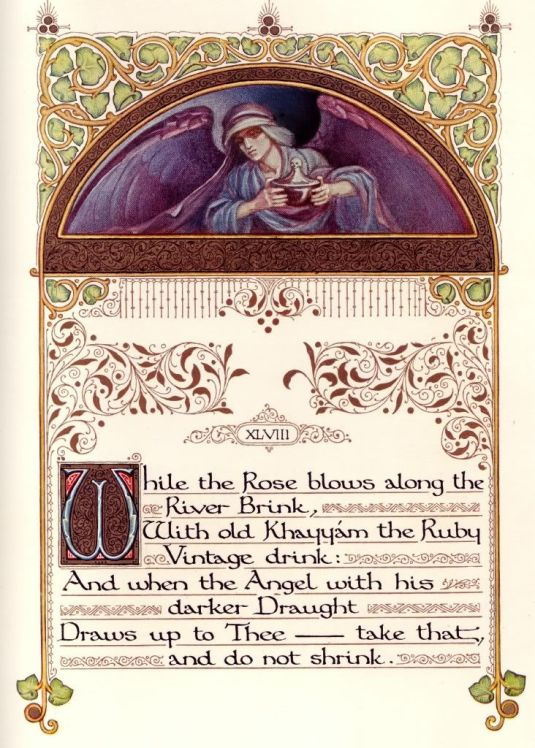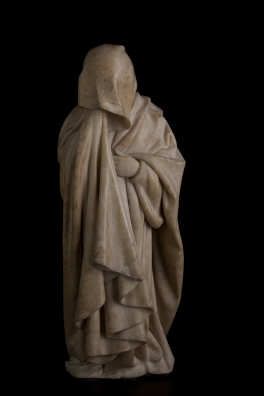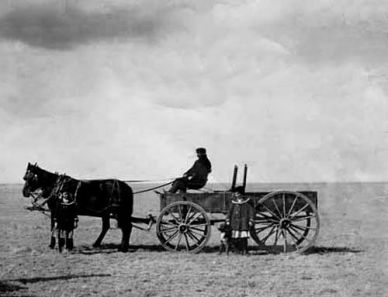There are very, very few things I have kept in my practice from my Methodist upbringing, but one of them is a strong appreciation for the observance of Ash Wednesday. It is a day to release those things that weigh on you, to give up that which is not healthy, to let go of guilt, and prepare for the promise of the coming year.
I developed a ritual of my own for this day over the last few years, and I thought perhaps I’d share it here in case others might find some inspiration in it.
Ash Wednesday/Ash Moon Ritual
I typically perform this ritual at night, when the sky is dark except for the stars. It is not necessary to do this on the exact day designated by the Christians as Ash Wednesday, unless that day has particular significance to you. I prefer to time this with a waning or dark/new moon near but usually before Ostara. All elements are mostly improvised, so if the idea appeals to you, there is certainly no need to follow the description below to the letter. As in all things, be creative, and do what feels right to you.
Morning of: Rinse hair in tincture prepared the night before of sage, walnut and rosemary.
Late evening: Ground and center, reflect and meditate on the cleansing energy of the waning or new moon. Think of preparing yourself for the fresh start that will come with the waxing of this moon cycle and the advancing spring. I like to have a small glass of water with a few drops of walnut essence for courage, independence, and relief of tension. Prepare for the ritual by washing your face and hands, brushing your teeth. Ready your physical body with cleansing in the spirit of renewal. As you wash your face, visualize yourself at the bank of a moonlit river, covering your face with mud. Visualize the mud seeping up all residual negativity from the last year, and as you rinse your face, picture your shedding past dissolving away in the current, running toward the sea-source, being purified and re-purposed.
Run a warm bath and set aside a chosen combination of oils to add to the water later. You can arrange the timing how it works best for you, but if you run the bath hot, you can complete the next steps while allowing the bath to cool.
Much of this ritual involves allusions to the statement, “Ashes to ashes, dust to dust.” If this smacks too much of Christian doctrine for you, a similar quote with a more pagan feel from Matthew Arnold’s Empedocles on Etna expresses similar sentiments:
“To the elements it came from\Everything will return.\
Our bodies to earth,\Our blood to water,\Heat to fire,\Breath to air.”
A text that would work equally well is the song “We come from the Goddess, and to Her we shall return\Like a drop of rain flowing to the ocean.” I have pleasant associations with this song, so I will often chant this as I center prior to beginning the ritual.
When you are relaxed and focused and have raised any protective power you feel necessary, go to a secluded place outside where you can see the sky, and invite your chosen spirits to witness by the ringing of chimes or by an invocation.
Sit and contemplate the significance of the day, this time to acknowledge those experiences that have built on your shoulders over time, and the opportunity to liberate yourself from these bonds. As you ponder, list those things you wish to dispel on a narrow strip of paper. Between each affirmation, write repetitions of the phrase “I am dust, and to dust I shall return,” or variations on that phrase, like a refrain between each verse.
I am dust and to dust I shall return.
I will release my burdens and fears.
I am of dust and to dust I shall return.
I will let heal my aged wounds.
I am the daughter of dust and to dust I shall return.

I will uncover my shame and doubt.
I am the dust and to dust I shall return.
Blanket me, oh sacred, loving, all-embracing, creating, destroying dust.
When your list is complete, or as you are writing, light some dried sage in a small cauldron so that it burns slowly but steadily. Tear each verse from your paper and read it aloud — proclaim and declare it to your spirit witnesses, then burn it in the sage fire to seal your promise and banish that which you are releasing. Gaze into the fire and measure your breathing. Reflect on each declaration as it burns; watch the variations in the flame, the smoke, the smell. Continue, repeating a variation on your refrain after each verse until each and all are consumed by the purifying flames. When this is done, all of the dried sage should also be burnt.
Dampen and extinguish any remaining embers with old soil from withered plants or neglected corners, and mix in the ashes with the soil using your hands. Feel the residual heat from your fire warming the soil, picture it as gestating life stirring in the earth as you add nutrients to renew the soil. Ensure that the fire is completely out, then sprinkle the ash-enriched soil at entryways and sacred places around your home, saying as you do so, “Protect my home and all within.”
Smudge some of the ashes on your forehead or body before returning inside and entering the bath to meditate on the energy of release and purify your body with a hyssop and sea salt scrub.
Ring the chimes again and ground your energy to close. Drink the remainder of the walnut essence water.
I like to complete the closing of the ritual with a long-term divination reading to look ahead to the coming year.
As a footnote, one of the more common Psalms to be read at Ash Wednesday services is the Miserere (Psalm 51), and it has been compared interestingly to the ancient Egyptian Opening of the Mouth ceremony, which has some textual parallels. The Opening of the Mouth was a ritual performed on the mummies of the recently deceased and also on religious statuary to imbue them with the life and spirit of the deceased or of the deity they represented, and to allow that deity or spirit to breathe, speak, and experience all offerings provided to their physical image on the material plane. In the Opening of the Mouth ceremony, the presiding priest holds a ritual tool (usually an adze, a kind of carving tool) to the mouth of the image to “open” it. This process has been compared to the practice of swiping a finger along the mouth of a newborn to clear its airways and allow it to breathe — awakening its spirit. Although Psalm 51 is a song of repentance, it is also one of renewal, and although Ash Wednesday has historically been associated with confession of sins, it is also a moment for rebirth, and I feel this is an important quality to invite at this time of year.
In peace (em hotep),
arrow






